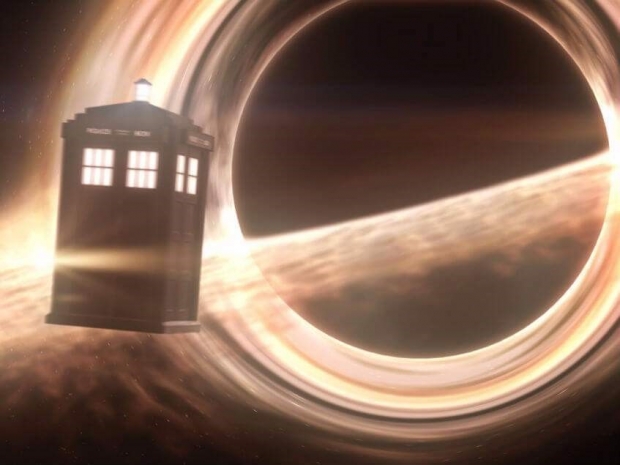For those who are not slaves to US television Sci-Fi and think the only innovation came from Star Trek, the British show, Dr Who, came up with some rather good higher level sci-fi ideas. One idea is that the Time Lords, who were good guys for most of the long running series, powered their time travel and civilisation using a captured black hole. For years trekkies laughed at that one and pointed to how Star Trek invented tablets and mobile phones as proof of its far thinking thoughts.
Now according to Science magazine the Dr Who idea has merit.
Researchers have shown that highly advanced alien civilizations could theoretically build megastructures called Dyson spheres around black holes to harness their energy, which can be 100,000 times that of our Sun. The work could even give us a way to detect the existence of these extraterrestrial societies.
Black holes are typically thought of as consumers rather than producers of energy. Yet their huge gravitational fields can generate power through several theoretical processes. These include the radiation emitted from the accumulation of gas around the hole, the spinning "accretion" disk of matter slowly falling toward the event horizon, the relativistic jets of matter and energy that shoot out along the hole's axis of rotation, and Hawking radiation—a theoretical way that black holes can lose mass, releasing energy in the process.
From their calculations, researchers concluded that the accretion disk, surrounding gas, and jets of black holes can all serve as viable energy sources. In fact, the energy from the accretion disk alone of a stellar black hole of 20 solar masses could provide the same amount of power as Dyson spheres around 100,000 stars, the team will report next month in the Monthly Notices of the Royal Astronomical Society. Were a supermassive black hole harnessed, the energy it could provide might be 1 million times larger still.
If such technology is at work, there may be a way to spot it. According to the researchers, the waste heat signal from a so-called "hot" Dyson sphere—one somehow capable of surviving temperatures in excess of 3000 kelvin, above the melting point of known metals—around a stellar mass black hole in the Milky Way would be detectible at ultraviolet wavelengths. Such signals might be found in the data from various telescopes, including NASA's Hubble Space Telescope and Galaxy Evolution Explorer.
Next they will be reversing the polarity on the neutron flow, and Star Trek innovation will be much mocked.




